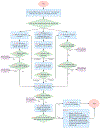A systematic approach for developing a corpus of patient reported adverse drug events: A case study for SSRI and SNRI medications
- PMID: 30611893
- PMCID: PMC12139017
- DOI: 10.1016/j.jbi.2018.12.005
A systematic approach for developing a corpus of patient reported adverse drug events: A case study for SSRI and SNRI medications
Abstract
"Psychiatric Treatment Adverse Reactions" (PsyTAR) corpus is an annotated corpus that has been developed using patients narrative data for psychiatric medications, particularly SSRIs (Selective Serotonin Reuptake Inhibitor) and SNRIs (Serotonin Norepinephrine Reuptake Inhibitor) medications. This corpus consists of three main components: sentence classification, entity identification, and entity normalization. We split the review posts into sentences and labeled them for presence of adverse drug reactions (ADRs) (2168 sentences), withdrawal symptoms (WDs) (438 sentences), sign/symptoms/illness (SSIs) (789 sentences), drug indications (517), drug effectiveness (EF) (1087 sentences), and drug infectiveness (INF) (337 sentences). In the entity identification phase, we identified and extracted ADRs (4813 mentions), WDs (590 mentions), SSIs (1219 mentions), and DIs (792). In the entity normalization phase, we mapped the identified entities to the corresponding concepts in both UMLS (918 unique concepts) and SNOMED CT (755 unique concepts). Four annotators double coded the sentences and the span of identified entities by strictly following guidelines rules developed for this study. We used the PsyTAR sentence classification component to automatically train a range of supervised machine learning classifiers to identifying text segments with the mentions of ADRs, WDs, DIs, SSIs, EF, and INF. SVMs classifiers had the highest performance with F-Score 0.90. We also measured performance of the cTAKES (clinical Text Analysis and Knowledge Extraction System) in identifying patients' expressions of ADRs and WDs with and without adding PsyTAR dictionary to the core dictionary of cTAKES. Augmenting cTAKES dictionary with PsyTAR improved the F-score cTAKES by 25%. The findings imply that PsyTAR has significant implications for text mining algorithms aimed to identify information about adverse drug events and drug effectiveness from patients' narratives data, by linking the patients' expressions of adverse drug events to medical standard vocabularies. The corpus is publicly available at Zolnoori et al. [30].
Keywords: Adverse drug events; Annotated corpus; Drug effectiveness; Drug safety; Information extraction; Machine learning; Online healthcare forums; Patients narratives; Psychiatric medications; SNOMED CT; SNRIs; SSRIs; Semantic mapping; Social media; Text mining; UMLS.
Copyright © 2019 Elsevier Inc. All rights reserved.
Conflict of interest statement
Conflict of interest
We have no conflict of interest to declare.
Figures




References
-
- Aronson J, Bottled lightning, BMJ 331 (7520) (2005) 824.
-
- Gurulingappa H, Klinger R, Hofmann-Apitius M, Fluck J, An empirical evaluation of resources for the identification of diseases and adverse effects in biomedical literature. Paper presented at the 2nd Workshop on Building and evaluating resources for biomedical text mining (7th edition of the Language Resources and Evaluation Conference), 2010.
Publication types
MeSH terms
Substances
Grants and funding
LinkOut - more resources
Full Text Sources

